Journal of Clinical & Experimental Dermatology Research
Open Access
ISSN: 2155-9554
ISSN: 2155-9554
Review Article - (2021)
Wound healing is a natural process. The integrity of the skin and injured tissue restoration include many cellular and biochemical phenomena. There are different kinds of conventional dosage forms that are utilised for the wound healing process. Apart from various conventional dosage forms, herbal therapies are gaining more importance nowadays. The herbal therapies are known for their non-habitual nature and have very less side effects as compared to conventional dosage forms. Recently, asiaticoside, an important chemical constituent of gotu kola that is extracted by different methods, is being utilised in wound healing. Asiaticoside has excellent wound healing capability. There are many studies on asiaticoside which reveal that it is a gold herbal compound that is used in the management of wound. Apart from its wound healing activity it also shows antidepressant, antidiabetic, anti-inflammatory, antipyretic action. This review article gives a comprehensive detail of asiaticoside and its various pharmacological actions and pharmacognostic features.
Herbal therapy; Centella asiatica; Asiaticoside; Wound healing; Gotu kola
Herbal therapies are widely used in the treatment or management of many diseases. The term herbal therapy means utilisation of ingredients that are obtained from natural sources. There are many herbal plants which contain broad range of therapeutic active ingredients. These active ingredients from plats are isolated by different methods. There are different guidelines for the preparation of infusion, decoction, extracts, tinctures, ointments, poultics, powders, decoction, salves, syrups and powder [1]. The active ingredients that show therapeutic effectiveness are present in different parts of plants, for example rhizomes of Zinger (Zingiber officinalis) [2], fruit of Cardamom (Elettaria cardamom) [3], flowering top Datura (Datura metal) [4], leaflets of Senna (Cassia angustifolia) [5,6]. Now-a-day, herbal plants are widely utilised to cure many disease e.g. asiatocoside that show excellent therapeutic activity related to wound healing. It is believed that herbal remedies show less side effects, less likely to cause dependency and safer than synthetic compound [7]. Due to these, herbal therapies gaining interest now-days. Many drug plants as well as their preparation are utilised to treat many health related problems. This review article highlights one such wonderful herbal compound that is asiaticoside. It shows many excellent therapeutic activities, the major being related to wound healing activity [8].
Pharmacognosy parameter of Gotu Kola
Gotu kola is also called brahma-Mandukarni. It is obtained from fresh and dried stem of Centella asiatica belonging to Umbelliferae family. The Mandukparni (Gotu kola) is widely distributed in Sri Lanka, India, Madasgacar, Africa, Australia, Indonesia, China and Vietnam with an attitude of 650 meter [9]. The taxonomy and the major chemical constituents of Gotu kola plant are shown in Table 1 and Figure 1, respectively.
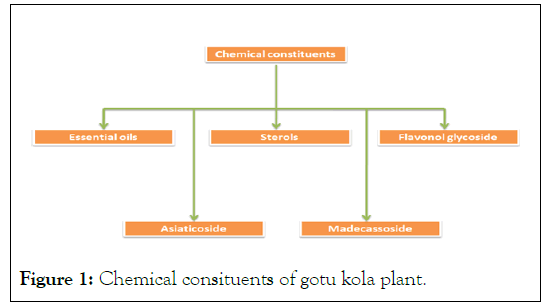
Figure 1: Chemical consituents of gotu kola plant.
| Classification | Name |
|---|---|
| Kingdom | Plantae |
| Division | Magonoliaphyta |
| Class | Magnolipsida |
| Order | Apiales |
| Family | Apiaceae |
| Genus | Centella |
| Species | Centella asiatica (L) urban |
Table 1: Taxonomy of Gotu kola plant.
Centella asiatica is utilised to treat dermatitis and it accerlates the healing of superfical wound. Asiaticoside and its derivatives also promote fibroblast prolifration and collagen synthesis. It is used as nervine tonic and as anti-anxiety, anti-stress, and sedative agent. It is utilised in the treatment of skin related disease, syphilise, leprosy and also in the wound healing [10,11]. The alcoholic extract of whole plant has anti-cancer activity.
The asiaticoside is extracted from the Centella asiatica by using different methods. Some of them are explained as follow:
Conventional liquid solvent extraction
According to one study (Figure 2), 3 gram of Centella asiatica is dissolved in 100 mL of ethanol/water/ethanol, then the solution is stirred 1200 RPM for 24 hrs and asiaticoside is extracted to that solvent [12].
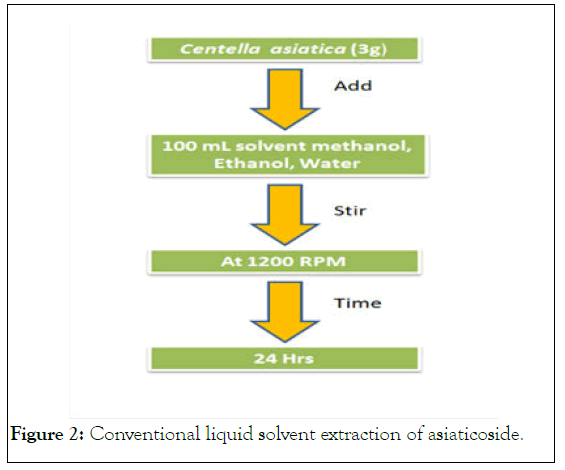
Figure 2: Conventional liquid solvent extraction of asiaticoside.
The Mandukparni (Gotu kola) is widely distributed in Sri Lanka, India, Madasgacar, Africa, Australia, Indonesia, China and Vietnam with an attitude of 650 meter.
Heat flux extraction
In this procedure (Figure 3), the Centella asiatica (3 gram) is added to methanol (64°C), water (100°C), Ethanol (78°C). The solvent is then the heated for 5 hrs to extract asiaticoside [12].
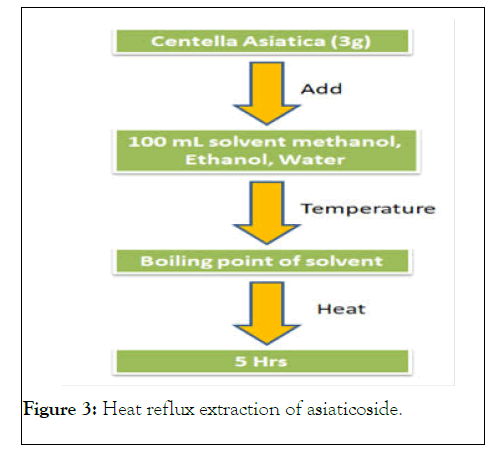
Figure 3: Heat reflux extraction of asiaticoside.
Soxlet extraction
Centella asiatica (3 gram) is added to 100 mL of methanol, ethanol, water and boiled for 5 hrs at the boiling point of each solvent [12] (Figure 4).
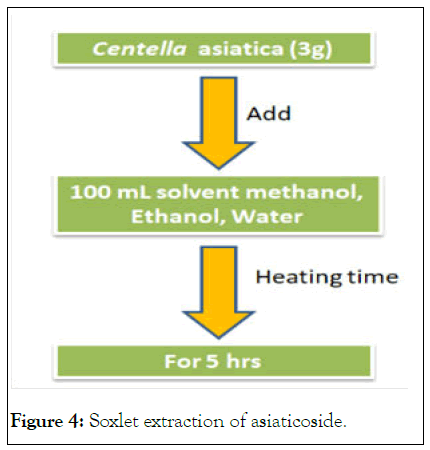
Figure 4: Soxlet extraction of asiaticoside.
Ethanolic extract of asiaticoside
The aerial part of Centella asiatica is dried at a temperature of 40°C, then ground to form coarse powder. The herb is macerated with 95% ethanol. After three days, the supernatant is collected. The solvent is then evaporated and extract is stored at -20°C (Figure 5) [13].
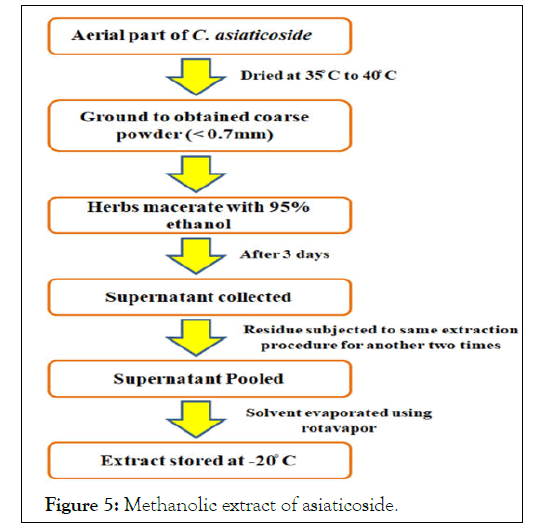
Figure 5: Methanolic extract of asiaticoside.
Asiaticoside (Figure 6) is derived from plant Centella asiatica (Brahma-Mandukarni), which is a trisaccharides terpenene. The single crystal X-ray has been used in the determination of asiaticoside. The glycoside, C48H78O19, is prismatic with space group monoclinical, C2 and lattice constant a=41.46, b=17.988, β=99.66, cell volume v=5602.3, Z=4 [14].
Figure 6: Structure of asiaticoside.
There are different High Pressure Liquid Chromatography (HPLC) methods that are already reported for the determination of asiaticoside. Some of them are described in Table 2. In most of the methods, authors used mobile phase with a composition of acetonitrile as organic phase and orthophosphoric acid of acidic pH as aqueous phase.
| Solvent system | Column | Detector | Wavelength | Flow rate | Injection volume | Retention time | References |
|---|---|---|---|---|---|---|---|
| Orthophosphoric acid (0.3%): Acetonitrile (80: 20) | C-18; size 250 × 460 mm | UV detector | 210 nm | 1.8 mL/min | 20 µL | 5.0 min | [15] |
| Acetonitrile: 0.1% H3PO4 (30: 70) | C-8 (250 × 4.6 mm, 5 µm) | UV detector | 206 nm | 1.0 mL/min | 20 µL | 7.60 min | [16] |
| Acetonitrile: Orthophosphoric buffer | RP-18e (5 µm) | Photo diode array detector | 210 nm | 1.8 mL/min | 20 µL | 11.60 min | [17] |
| Acetonitrile: Phosphate buffer pH 3 (50: 50) | C-18, 5 µm (150 mm × 4.6) | PDA plus detector | 205 nm | 1.0 mL/min | 20 µL | 4.342 min | [18] |
Table 2:Chromatographic condition of HPLC method of asiaticoside.
UV detection ranged from 205 to 210 nm and run time varied from 4.3 to 11. 6 minutes [15-18]. In majority of the methods, C18 column was used for separation of asiticoside, except in one method reported by Da Rocha et al.[16] where C8 column was used.
When the asiaticoside rich cream applied to the animal, it reduced the area of wound [16]. Azis et al. [13] examined the In vitro and In-vivo wound healing studies of methanolic fraction of Centella asiatica on New- Zealand white albino rabbit.
The asiaticoside was used in the concentration of 119.89 Âμg/ mL, which was capable to heal wound. Author found that the untreated group showed normal healing while the extract treated group showed faster wound healing activity.
Various therapeutics benefits of Asiaticoside
Wound healing activity: The process of wound healing is a natural process which requires medical care and appropriate management. There are different kinds of materials or medical treatments currently available that are used for wound healing. The different medical care materials have characteristic features and they act according to their ability. Some of them provide the physical protection to wound, some of them are capable to deliver the drug directly into the affected area and some of them protect the wound from foreign pathogens. Asiaticoside is newly found herbal therapy which is effectively used in the management of wound or burn related wound healing. The topical application of asiaticoside can cause the macrophages migration to epidermis and corneum of tissue surrounding the wounds, but no effect on polymorphonuclear leucocyte migration. Asiaticoside also increases the IL-1β level [19]. Some reported wound healing activities of asiaticoside are given below:
Ruszymah et al. [20] reported the wound healing efficacy of aquous extract of Centella asiatica. The different concentration of Centella asiatica used were 7.8, 15.6, 31.2, 62.5, 125, 250, 500, 1000 ppm. The highest concentration of Centella asiatica i.e. 1000 ppm showed anti- proliferative effect [20]. Shetty et al. [21] explored the effect of Centella asiatica on dexamethasone suppressed and normal wound healing in rat model. Asiaticoside used in the dose of 4 g/kg. He observed that there is significant increase in the wound breaking strength in the extract treated group [21]. sukla et al. [22] studied the in-vitro and in-vivo wound healing activity of asiaticoside. He studied the effect of asiaticoside in normal and diabetic animal and observed that there is faster wound healing in the group treated with asiaticoside as compared to the control group [22]. Ahmed et al. [23] tested the asiaticoside rich fraction to check the efficacy in wound healing. Authors check wound healing activity of Centella asiatica PEG/PVP hydrogel on rabbit. They observed that the asiaticoside treated group reduce the size of wound indicates that contraction epithelialization and subsided [23]. Sung et al. [24] researched the wound healing activity of asiaticoside on Sprague-Dawley rats. The process of wound healing on excision wound model was checked for the period of one month. Author found that, there was decrease in the wound excision with time passage [24]. Aylin et al. [25] studied the wound healing efficacy of Centella asiatica on female albino rats.
Author observed that, the asiaticoside treated group showed better wound healing activity as compare to the control group[25]. Sandipan et al. [26] reported the wound healing activity of hydro-alcoholic extract of Centella asiatica on Wistar albino rat (either sex). When the asiaticoside rich cream applied to the animal, it reduced the area of wound [26]. Azis et al. [13] examined the In-vitro and In-vivo wound healing studies of methanolic fraction of Centella asiatica on New- Zealand white albino rabbit. The asiaticoside was used in the concentration of 119.89 μg/mL, which was capable to heal wound. Author found that the untreated group showed normal healing while the extract treated group showed faster wound healing activity [13].
Antidepressant activity of asiaticoside: Depression is a mood disorder in which there is feeling of ignorance, lack of concentration, thoughts of suicide, and loss of interest in activities. Currently there are many treatment options that are utilised in the management of depression. The anti-depressant are capable to restore the state of psychological wellness [27]. Nowadays herbal therapies are gaining more interest. There are many reports on anti-depressant activity of asiaticoside. Some reported anti-depressant activities of asiaticoside are given below:
Luo et al. [28] researched the anti-depressant effect of asiaticoside on male mice. Author observed that, there was enlargement in the BDNF, PSD-95 and synaptic expression in hippocampus but not in the frontal cortex, after administration of asiaticoside [28]. Tianheng et al. [29] investigated the antidepressant like properties of asiaticoside on male-sprague-dawley rat. Author observed that borneal can open the BBB and enhance the distribution in brain. The asiaticoside and borneal have synergistic effect in order to treat depression [29]. Luoqing et al. [30] examined the asiaticoside anti-depressant action on male mice model. Authors found that the asiaticoside elevated the level of 5-HT and NE (Nor- epinephrine). Asiaticoside produces the anti-depressant activity by activation of BDNF signalling [30]. Liang et al. [31] reported the anti-depressant action asiaticoside on male mice model. The authors investigated that, asiaticoside showed anti-depressant action evaluated by FST (Force Swimming Test) [31].
Anti-inflammatory activity of asiaticoside: Asiaticoside is triterpenoid that shows anti-inflammatory and anti-oxidant action. The lipopolyssacharides are inhibited by the dose of asiaticoside. Furthermore, as it inhibits pro-inflammatory mediators, including IL-6 and TNF-α level, PGE2 and COX-2 expression. Jingyuan et al. [32] studied the anti-inflammatory and anti-oxidant activity asiaticoside. Asiaticoside inhibited the up-regulation of COX-2 in dose dependent level [32]. Hence we can use asiaticoside in future for producing anti-inflammatory activity. Yang et al. [33] reported the anti-inflammatory effect of asiaticoside on mice model. Author observed that the given dose of asiaticoside inhibits the pathway of p38-MAPK. This inhibition of this pathway reveals that asiaticoside is capable to produce anti-inflammatory activity [33]. Haung et al. [34] investigated the potential effect of asiaticoside loaded PLGA electrospun nanofibre. It enhances the gene expression of inflammatory cytokines as revealed via in-vitro studies [34].
Anti-diabetic activity of asiaticoside: Diabetes is chronic metabolic disorder, in which there is increase in the glucose level in blood for prolong period of time. Diabetes if left untreated, it produces many serious side effects such as eye disease, kidney failures, etc. There are many synthetic drugs currently used in the management of diabetes mellitus. There are many reports which reveal the anti-diabetic activity of asiaticoside. The ethanolic and methanolic extract of asiaticode significantly lower the bold glucose level in mice model [35]. Fitrianda et al. [36] investigated the anti-diabetic activity of ethanolic extract of Centella asiatica. Author administered the asiaticoside in dose of 1.4, 2.8, 5.6 mg for 21 days, which showed glucose lowering action in alloxan-induced mice model [36]. Sasikala et al. (2018) studied glucose lowering activity of ethanolic extract of Centella asiatica on streptozotocin induced diabetic rats. The extract was administred to rat in a dose of 300 mg/kg, which shows glucose lowering action on rat [37]. Mehta et al. reported the glucose lowering activity of Centella asiatica. By using soxlet apparatus the hydro-alcoholic extraction from leafs of C. asiaticoside was carried out. By using Molegro virtual docker the docking screening was performed. The In-vitro antidiabetic assay showed glucose lowering activity due to inhibition of α-amylase and β- glucosidase enzymatic activity [38] (Table 3).
| Sr. No | Aim of study | Animal model | Outcome of research | References |
|---|---|---|---|---|
| 1. | The wound healing study of methanolic fraction of centella asiatica: In-vitro, In-vivo study | Rabbit (New-zealand white albino) |
Shows better result as compared to the vehicle control group | [13] |
| 2. | To check wound healing effect of Centella asiatica on normal and dexamethasone suppressed Wistar albino rat | Wistar albino rat | The extract treated group shows significant increase in the wound breaking strength | [21] |
| 3. | Centella asiatica loaded hydrocolloids wound dressing in the effective wound healing an In-vivo study | Male D-sprague dawley rats | The hydrocolloids loaded with Centella asiatica enhance the healing effect in infection and abrasion wound in rat | [24] |
| 4. | The wound healing in albino rat: A comparative efficacy of tajects erecta and Centella asiatica | Albino rat | Shows promising wound healing activity | [26] |
| 5. | Centella asiatica used in wound healing: An In-vitro and In-vivo study | Guinea pigs | As compared to vehicle treated diabetic group, 0.4% of asiaticoside shows 42% reduction in the area of wound in diabetic animal | [22] |
| 6. | Antidepressant effect of asiaticoside on mice model | Male swiss mice | The present study reveals that asiaticoside shows anti-depressant like effect | [31] |
| 7. | The anti-inflammatory and anti-pyretic effect of asiaticoside on rat | Adult male sprague dawley rats | Asiaticoside shows anti-inflammatory action and capable to lower the elevated temperature | [32] |
| 8. | The anti-diabetic effect of Centella asiatica and Andrographus paniculata | Wistar rat | The combination of Centella asisatica and Andrographus paniculata shows anti-diabetic effect | [39] |
| 9. | The antidepressant action of asiaticoside by promoting the distribution in to the brain | Male sprague dawley rats | The asiaticoside shows antidepressant action | [29] |
| 10. | The Centella asiatica pharmacological properties in order to accelerate wound Healing | New Zealand white albino rabbit | There is reduction in the wound was observed in the group treated with asiaticoside rich hydrogel | [23] |
Table 3: Recent studies on Centella asiatica activities.
The herbal therapies are widely used in the treatment or management of many diseases. The herbal therapies have negligible side effects and also effective have pharmacological activities, so that herbal therapies gaining interest now-days. Asiaticoside is a herbal active constituent that is obtained from Centella asiatica. The different formulations or asiaticoside rich fraction are utilised in the wound healing. Asiaticoside has wound healing activity apart from that, it is also used in the treatment of other diseases such as diabetes, fever, stress etc. The various formulations such asiaticoside loaded nanoparticles, Liposomes, hydrocolloids, may be used in targeted delivery of asiaticoside. In future, asiaticoside based novel drug delivery may be explored further to establish it as an alternative better option for the treatment of various wounds, diabetes and depression.
Citation: Kumar M, Mandal UK (2021) Asiaticoside: A Wonderful Herbal Component of Versatile Therapeutic benefits with Special Reference to Wound Healing Activity. J Clin Exp Dermatol Res. S9:571.
Received: 28-Jun-2021 Accepted: 12-Jul-2021 Published: 19-Jul-2021 , DOI: 10.35248/2155-9554.21.s9.571
Copyright: © 2021 Kumar M, et al. This is an open-access article distributed under the terms of the Creative Commons Attribution License, which permits unrestricted use, distribution, and reproduction in any medium, provided the original author and source are credited.